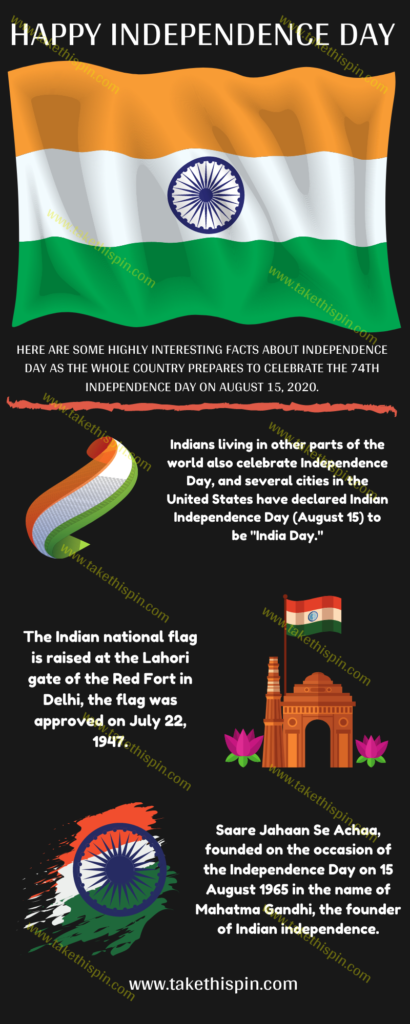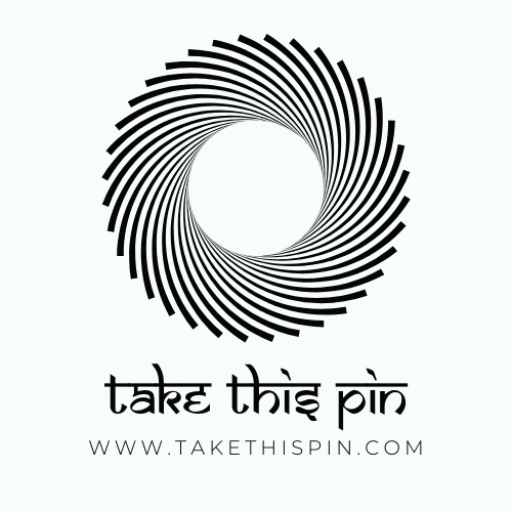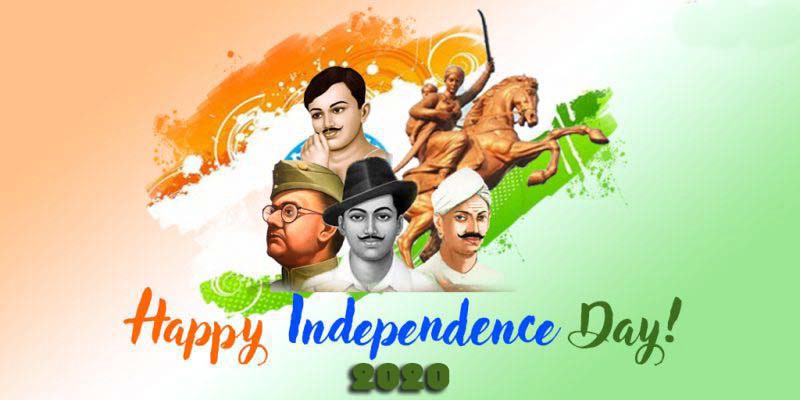Independence Day Of India

Here are some highly interesting facts about Independence Day as the whole country prepares to celebrate the 74th Independence Day on August 15, 2020. On the occasion of Indian Independence Day, here are some of the most important facts and figures about the history and culture of the country:
Saare Jahaan Se Acha quickly became an anthem of opposition under Mahatma Gandi to the British Raj. The song is an ode to Hindustan—the land comprising present-day Bangladesh, India and Pakistan. An abridged version is sung and played frequently as a patriotic song and as a marching song of the Indian Armed Forces.
At midnight on August 15, 1947, the British Empire, also known as the Raj, declared the independence of India and Pakistan from the United Kingdom of Great Britain and Northern Ireland (Great Britain) and the Commonwealth of Independent States (Canada) on the basis of the Indian Independence Act of 1947. This day is celebrated every year on August 15 in India and August 14 in Pakistan.
Thus India achieved freedom on the last day, and since then 15 August has been celebrated as India’s Independence Day. Indians living in other parts of the world also celebrate Independence Day. Several cities in the United States have declared Indian Independence Day (August 15) to be “India Day.” Among the celebrations taking place in India, the major celebration is in the 17th-century RedFort, which serves as a political center for the working government.
The Indian national flag is raised at the Lahori Gate of the Red Fort in Delhi. The flag was approved on July 22, 1947. On August 15, 1947, India became a sovereign and democratic nation, and India gained independence. The Indian nation was presented with a flag when it was hosted by the then Prime Minister Jawaharlal Nehru on August 15, 1946. The flag was raised and handed over to the Indian National Congress (Indian Communist Party) in New Delhi.
Thousands of Indians across the world on Saturday will proudly celebrate India’s 74th Independence Day with the tricolor fluttering high and the national anthem reverberating at Indian missions abroad. The tricolor is celebrated in UAE in the iconic Burj Khalifa. The Federation of Indian Associations (FIA) of the tri-state area of New York, New Jersey, and Connecticut said in a statement that it “will be creating history” on August 15, 2020, by “hosting the first-ever flag hoisting ceremony at Times Square” to commemorate India’s Independence Day.
Tv series, documentaries, patriotic films, and programs related to India’s freedom are being broadcasted to get people in the mood for Independence Day. Due to ongoing COVID 19 pandemic, the celebration across the country will be muted this year with only selected attendees of around 4000 being invited for the Red Fort ceremony. Till last year, close to 10,000 people used to attend the function to witness the address by the Prime Minister.
The Indian national flag is raised at the Red Fort in New Delhi and the Prime Minister unfurls the flag of the nation to commemorate and celebrate this historic event. Special arrangements have been made to maintain the sanctity of the Independence Day of India flag-hoisting ceremony at Red Fort on Saturday keeping in mind the necessary precautions due to the Covid-19 pandemic. The defense ministry said the measures range from quarantining the armed forces personnel who will present the guard of honor to PM Modi to inviting NCC cadets instead of young school children to witness the event.
On 15 August 1947, the first prime minister of India, Jawaharlal Nehru, raised the Indian national flag above the Lahori Gate. Every year on Independence Day of India (15 August), the prime minister hoists the Indian “tricolor flag” at the fort’s main gate and delivers a nationally broadcast speech from its ramparts.
In 1946, the Labour government in Britain, its exchequer exhausted by the recently concluded World War II, realised that it had neither the mandate at home, the international support, nor the reliability of native forces for continuing to control an increasingly restless India. On 20 February 1947, Prime Minister Clement Attlee announced that the British government would grant full self-governance to British India by June 1948 at the latest.
The new viceroy, Lord Mountbatten, advanced the date for the transfer of power, believing the continuous contention between the Congress and the Muslim League might lead to a collapse of the interim government. He chose the second anniversary of Japan’s surrender in World War II, 15 August, as the date of power transfer.
The British government announced on 3 June 1947 that it had accepted the idea of partitioning British India into two states; the successor governments would be given dominion status and would have an implicit right to secede from the British Commonwealth. The Indian Independence Act 1947 (10 & 11 Geo 6 c. 30) of the Parliament of the United Kingdom partitioned British India into the two new independent dominions of India and Pakistan (including what is now Bangladesh) with effect from 15 August 1947, and granted complete legislative authority upon the respective constituent assemblies of the new countries. The Act received royal assent on 18 July 1947.
The Constituent Assembly of India met for its fifth session at 11 pm on 14 August in the Constitution Hall in New Delhi. The session was chaired by the president Rajendra Prasad. In this session, Jawaharlal Nehru delivered the Tryst with Destiny speech proclaiming India’s independence.
Long years ago we made a tryst with destiny, and now the time comes when we shall redeem our pledge, not wholly or in full measure, but very substantially. At the stroke of the midnight hour, when the world sleeps, India will awake to life and freedom. A moment comes, which comes but rarely in history when we step out from the old to the new when an age ends, and when the soul of a nation, long suppressed, finds utterance. It is fitting that at this solemn moment, we take the pledge of dedication to the service of India and her people and to the still larger cause of humanity.— Tryst with Destiny speech, Jawaharlal Nehru, 15 August 1947
The members of the Assembly formally took the pledge of being in the service of the country. A group of women, representing the women of India, formally presented the national flag to the assembly.
The Dominion of India became an independent country as official ceremonies took place in New Delhi. Nehru assumed office as the first prime minister, and the viceroy, Lord Mountbatten, continued as its first governor-general. Gandhi’s name was invoked by crowds celebrating Independence Day of India; Gandhi himself however took no part in the official events. Instead, he marked the day with a 24-hour fast, during which he spoke to a crowd in Calcutta, encouraging peace between Hindus and Muslims
The Indian diaspora celebrates the Independence Day of India around the world with parades and pageants, particularly in regions with higher concentrations of Indian immigrants. In some locations, such as New York and other US cities, 15 August has become “India Day” among the diaspora and the local populace. Pageants celebrate “India Day” either on 15 August or an adjoining weekend day

